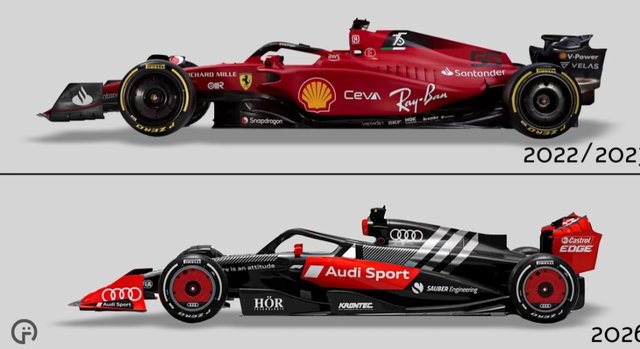Vanja #66 wrote: ↑07 Jun 2024, 15:02
yooogurt wrote: ↑07 Jun 2024, 14:53
A team member who spoke to formu1a.uno , said that it is indeed possible to reach 400 km/h, but due to limitations in terms of electricity use it will be difficult.
People are not aware of the magnitude of cutting down 55% of drag, for the same power of around 1000HP you get a car reaching 300kmh jump to 390-400kmh. Anything over 330-340kmh in typical races is too much kinetic energy for a worst-case crash, so this will of course mean a lot less energy used during a race. Active aero allows unbelievable efficiency figures and I think in 27 or 28 teams and FIA will agree to increase the wings a bit, maybe even in the final 2026 rule set
55% less drag is massive. To visualize what's possible here one only needs to consider two things - the cars around the 00s reached 370 km/h without any problems, the BAR, where they tried to reduce drag as much as possible, reached 413 km/h in the Mojave Desert. And actually the cars seem to look more like the 00s carsbin that regard than the current ones, as the whole appearance of the car looks more like an early 2000s car than a 2010s or 2020s car. The drag figures are therefore probably more similar to the early 00s cars than the current ones and these didn't have active aerodynamics. Speeds of 380, 390 kmh should therefore not be a problem with these cars without any limitations. Is anything over 340 km/h too much kinetic energy? We'll see where the FIA draws the line. After all, the '00 cars also reached 360-370 km/h and today's safety standards are higher. But also the "safety thinking". From what Tombazis says, it sounds like the new cars will be cut off somewhere between 350 and 360 kmh.
When I look at the new car it looks like they are once again trying to massively restrict the aerodynamics of the underfloor and diffuser. Not only do they want to massively reduce both, but they also want a lot more turbulence to reduce their performance, because the way the area behind the frontwing and at the intake looks, there's no way to really control the airflow that goes under the car. Somehow I find the whole thing a bit strange (without putting a value on it now) - they've put millions into research and development for the 2022 cars which should enable better racing, following and overtaking (which, as we saw at the beginning of 2022, actually worked) only to now discard much of it again. I don't know if it wouldn't have been better to simply ban all the "tricks" used by the teams to generate outwash and adapt the regulations instead of coming up with a completely new "car". And that after only three years. I welcome the fact that the cars are getting smaller again and will probably be more agile and less sluggish. But the fact that after just three years they are leaving a path that initially seemed quite promising and might only have needed a some adjustments... but maybe that's exactly what happened and I just don't see it. I just hope that Tombazis here knows what he's doing. He's certainly good enough for that.


